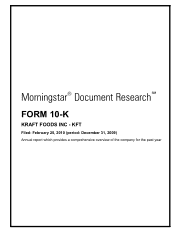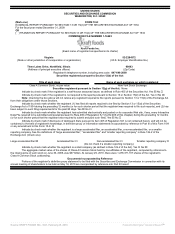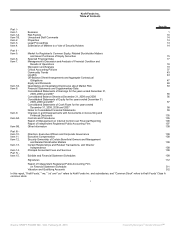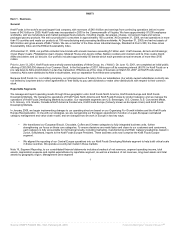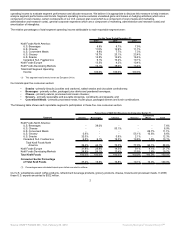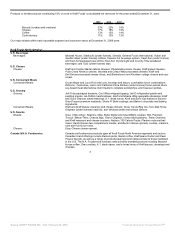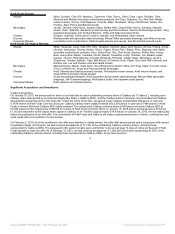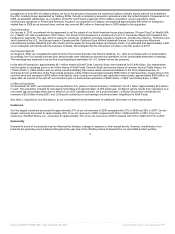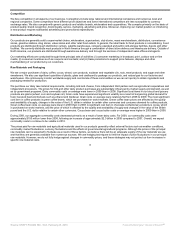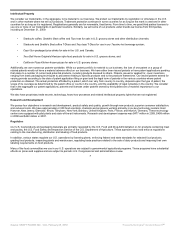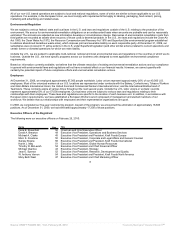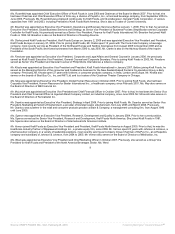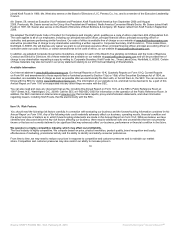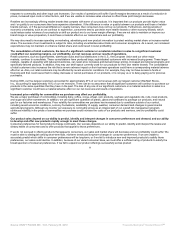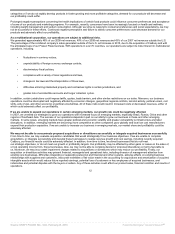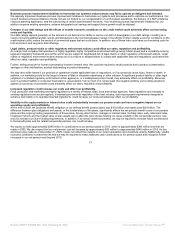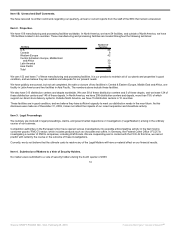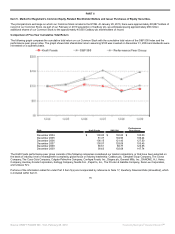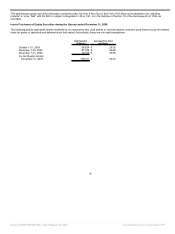Kraft 2009 Annual Report Download - page 9
Download and view the complete annual report
Please find page 9 of the 2009 Kraft annual report below. You can navigate through the pages in the report by either clicking on the pages listed below, or by using the keyword search tool below to find specific information within the annual report.
Competition
We face competition in all aspects of our business. Competitors include large national and international companies and numerous local and
regional companies. Some competitors have different profit objectives and some international competitors are less susceptible to currency
exchange rates. We also compete with generic products and retailer brands, wholesalers and cooperatives. We compete primarily on the basis of
product quality, brand recognition, brand loyalty, service, marketing, advertising and price. Moreover, improving our market position or introducing
a new product requires substantial advertising and promotional expenditures.
Distribution and Marketing
Our products are generally sold to supermarket chains, wholesalers, supercenters, club stores, mass merchandisers, distributors, convenience
stores, gasoline stations, drug stores, value stores and other retail food outlets. In general, the retail trade for food products is consolidating. Food
products are distributed through distribution centers, satellite warehouses, company-operated and public cold-storage facilities, depots and other
facilities. We currently distribute most products in North America through a combination of direct store delivery and warehouse delivery. Outside of
North America, our products are distributed through warehouse delivery and through the services of independent sales offices and agents.
Our marketing efforts are conducted through three principal sets of activities: (i) consumer marketing in broadcast, print, outdoor and on-line
media; (ii) consumer incentives such as coupons and contests; and (iii) trade promotions to support price features, displays and other
merchandising of our products by our customers.
Raw Materials and Packaging
We are a major purchaser of dairy, coffee, cocoa, wheat, corn products, soybean and vegetable oils, nuts, meat products, and sugar and other
sweeteners. We also use significant quantities of plastic, glass and cardboard to package our products, and natural gas for our factories and
warehouses. We continuously monitor worldwide supply and cost trends of these commodities so we can act quickly to obtain ingredients and
packaging needed for production.
We purchase our dairy raw material requirements, including milk and cheese, from independent third parties such as agricultural cooperatives and
independent processors. The prices for milk and other dairy product purchases are substantially influenced by market supply and demand, as well
as by government programs. Dairy commodity costs on average were lower in 2009 than in 2008. Significant cost items in our biscuit and grocery
products are grains (wheat, corn and soybean oil). Grain costs have experienced significant volatility as a result of burgeoning global demand for
food, livestock feed and biofuels such as ethanol and biodiesel. Grain costs on average were relatively flat from 2008 to 2009. The most significant
cost item in coffee products is green coffee beans, which are purchased on world markets. Green coffee bean prices are affected by the quality
and availability of supply, changes in the value of the U.S. dollar in relation to certain other currencies and consumer demand for coffee products.
Green coffee bean costs on average were lower in 2009 than in 2008. A significant cost item in chocolate confectionery products is cocoa, which
is purchased on world markets, and the price of which is affected by the quality and availability of supply and changes in the value of the British
pound and the U.S. dollar relative to certain other currencies. Cocoa bean and cocoa butter costs on average were higher in 2009 than in 2008.
During 2009, our aggregate commodity costs decreased primarily as a result of lower dairy costs. For 2009, our commodity costs were
approximately $150 million lower than 2008, following an increase of approximately $2.0 billion in 2008 compared to 2007. Overall, we expect
commodity costs to continue to be volatile in 2010.
The prices paid for raw materials and agricultural materials used in our products generally reflect external factors such as weather conditions,
commodity market fluctuations, currency fluctuations and the effects of governmental agricultural programs. Although the prices of the principal
raw materials can be expected to fluctuate as a result of these factors, we believe there will be an adequate supply of the raw materials we use
and that they are generally available from numerous sources. We use hedging techniques to limit the impact of price fluctuations in our principal
raw materials. However, we do not fully hedge against changes in commodity prices, and these strategies may not protect us from increases in
specific raw material costs.
6
Source: KRAFT FOODS INC, 10-K, February 25, 2010 Powered by Morningstar® Document Research℠

